Supply chain issues forcing school lunchrooms in Stark County to scramble
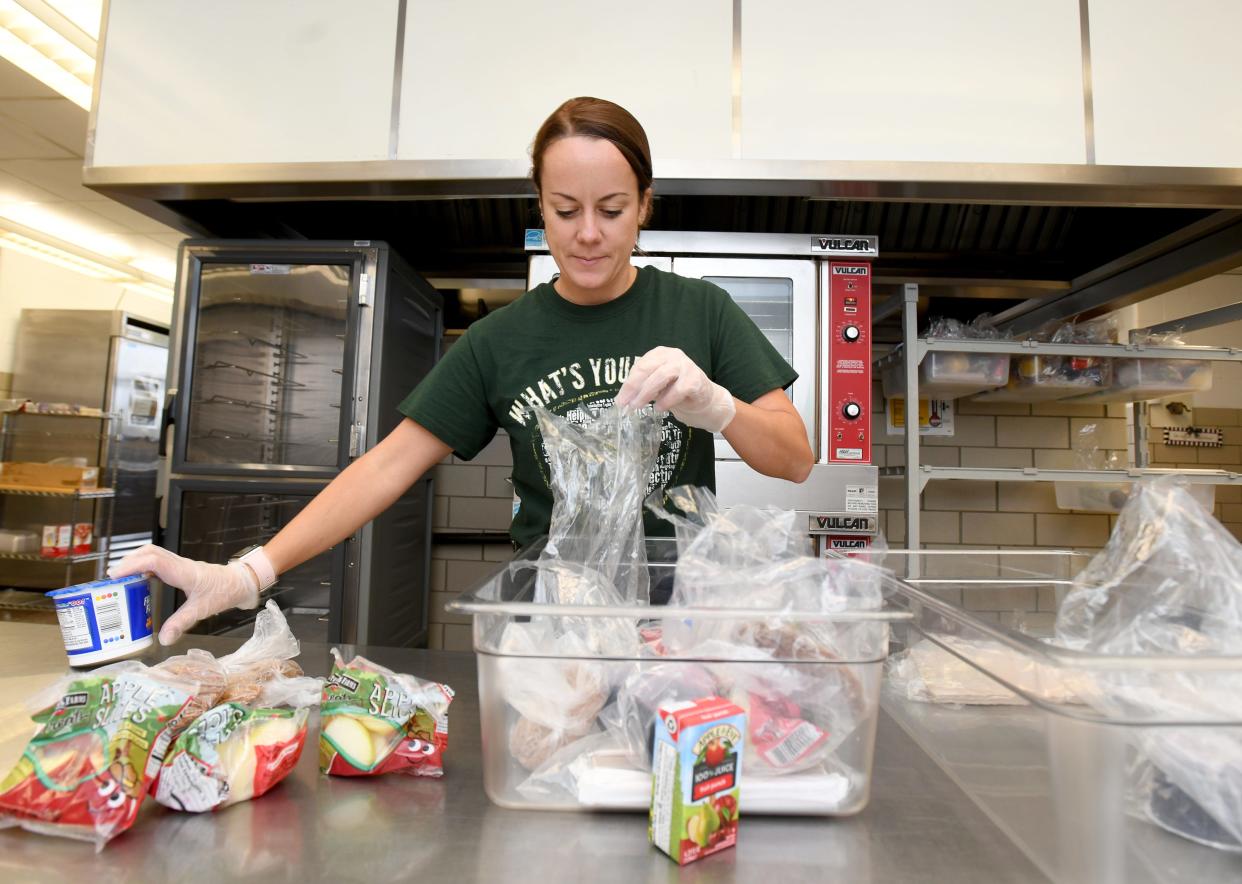
No pancakes or cereal. And a shortage of pizza, chicken, hamburgers and corn dogs.
What are students — or the school cafeteria workers trying to feed them — to do?
The supply chain shortages caused by the COVID-19 pandemic are leaving school cafeterias locally and across the country short of all sorts of food, utensils and even lunch trays.
“It’s a secondary impact to the pandemic,” said Kari Dennis, food service and human resource director for Westerville City Schools. “There was just a lot of hope with having the summer off that we would see a rebound in production."
But that hasn't happened, Dennis said.
Pandemic recovery pitfalls: What's behind supply shortages, hiring problems
Across the country, food deliveries to schools have been late or canceled altogether, said Diane Pratt-Heavner, a spokeswoman for the Virginia-based nonprofit School Nutrition Association (SNA). Sometimes, the trucks show up on time, but only with half the amount of food and supplies that were promised.
“It has left schools really scrambling and doing a lot more work to make sure kids continue to receive those healthy meals,” she said.
Locally, school food service officials have had to be flexible. One week they can't get an item, the next week they can.
Labor shortages that began with the COVID pandemic are also playing a role in the supply chain issues as Westerville schools, like many districts, is having a hard time filling food staff vacancies.
How districts are coping with school lunch food shortages
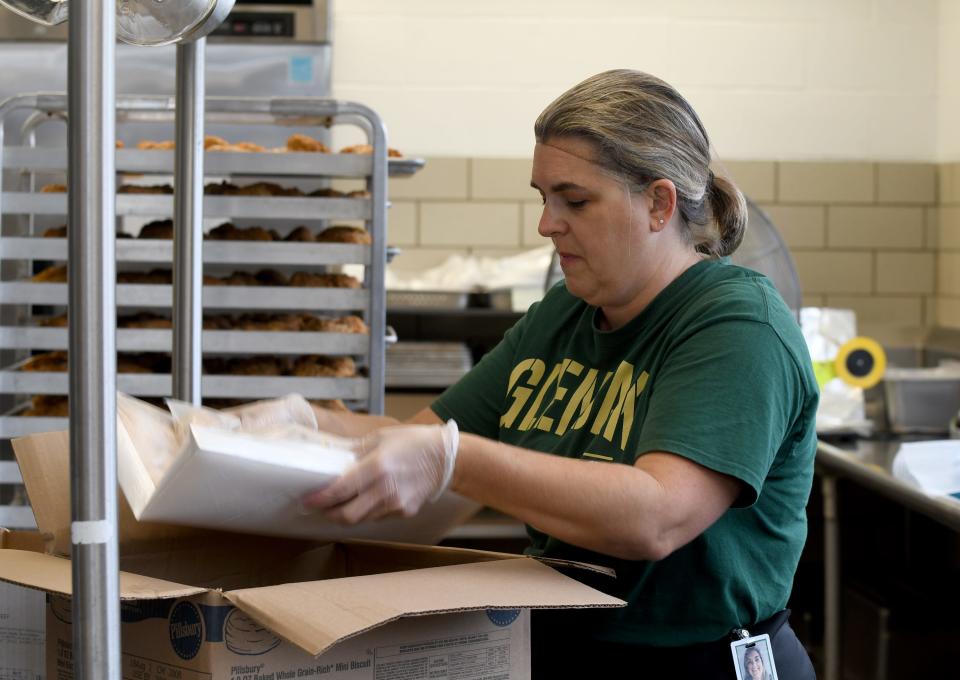
The supply-chain bottlenecks — in the United States and around the world — have caused record shortages of many products that American consumers are used to having readily available, including food and supply items needed by school cafeterias.
When distributors can't come through, some districts have had to resort to getting food from restaurants or grocery stores or retail outlets such as Sam's Club or Costco.
Tuslaw Local Schools has turned to Amazon to make up for shortages of paper products, food service supervisor Diana Koons explained, but even that hasn't been reliable.
"I'll place an order on Amazon and think, 'OK we're good,' but then I get a notice that they have canceled the order," Koons said.
With about 6,000 kids to feed, Plain Local Child Nutrition Director Jennifer Rex said it is not possible to procure items from other sources such as Sam's Club.
"It's a perfect storm," she said. "At the same time they decide we are going to feed all kids at no cost, we have a supply chain issue."
It's not a distribution problem at this point, Rex said, but rather a manufacturing issue.
Both Rex and Koons said one of the hardest items to get is breakfast foods, including cereal.
It's unclear if a strike at Kellogg's cereal manufacturing plants in three states is adding to the problems, food service officials said, but it can't be helping.
Due to COVID, Plain switched to serving breakfast to students in their classroom instead of the cafeteria. That move has eliminated the possibility of serving hot breakfast items. Instead, students are served individually packaged cereal and breakfast bars and other breakfast foods that are pre-wrapped.
Those items are one of the hardest things for school cafeterias to get their hands on, Rex said, and with more kids taking advantage of the free meals, the number of breakfasts served at Plain has jumped.
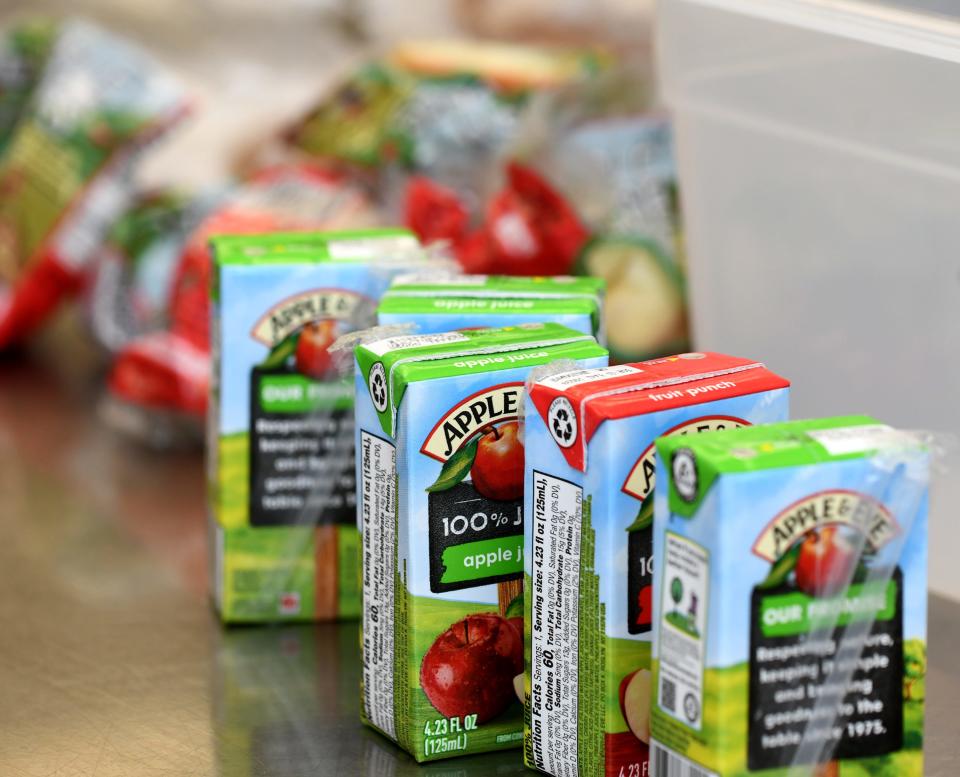
For the first time in her 27-year-career, Rex is serving as many breakfast meals as they are serving at lunch.
"It's unheard of," she said. "Typically breakfast is about a quarter of the meals you serve."
COVID boosters: Vaccine clinics scheduled in Stark County under mix-and-match guidelines
The Plain cafeteria staff members serve about 3,000 breakfasts and about 4,700 lunches each day.
Both Rex and Koons have considered buying cereal in bulk and filling bowls for each student but that could cause another problem if they can't procure bowls to serve the cereal.
Rex has discussed with school officials a return to serving breakfast in the cafeteria, but it may not solve the problem. It's been difficult to get waffles and pancakes.
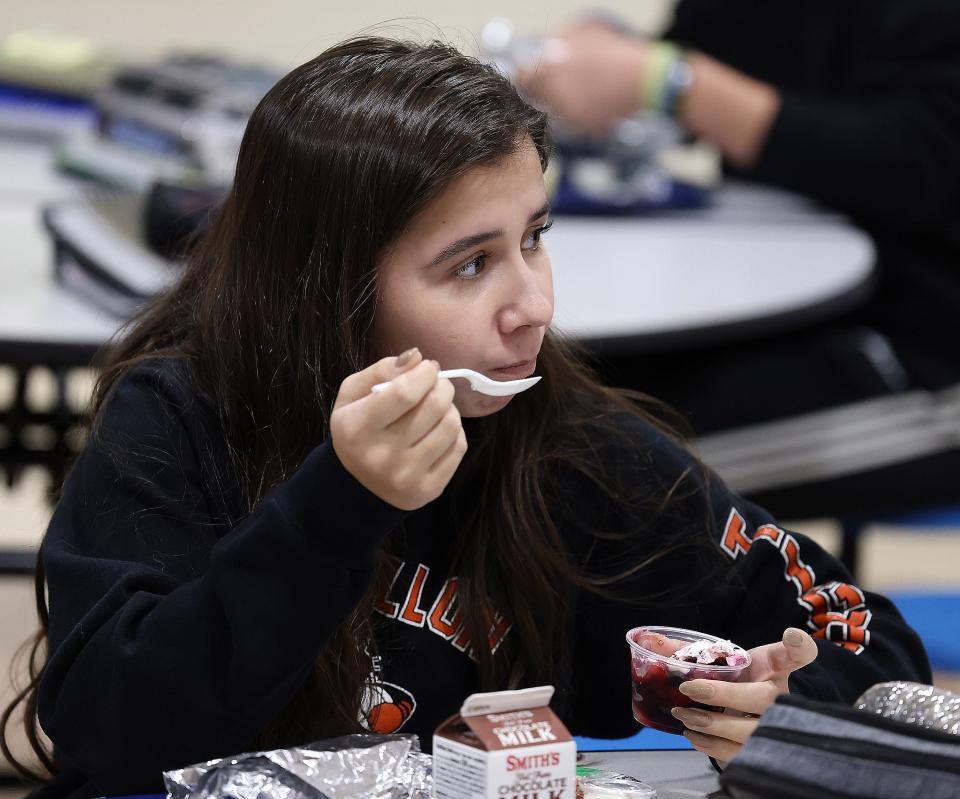
Additional required meals creating greater demand for food, utensils by school districts
Last year, the federal government mandated that public schools provide free breakfast and lunch for all students because of the pandemic, a measure that has continued into the current school year through the U.S. Department of Agriculture.
The meals are required to meet the dietary guidelines, which include offering a balance of fruits, vegetables, low-fat or fat-free milk, whole grains and lean protein with every meal, according to the School Nutrition Association.
Any replacement food items must also fall under those dietary guidelines, which makes things difficult, Koons said.
The district has a pot of money that can be used toward commodity items — minimally or non-processed foods — and those items are getting harder to come by, she said.
With those items scarce, it's harder to take advantage of the federal funding.
Tuslaw, like Plain and a number of other Stark districts, use Gordon Food Service.
"They have certain commodity items that are approved to use the federal money," Koons explained. "We are just seeing less and less of those items."
Tuslaw cafeteria staff members have been getting creative, she said. At the high school, students like flatbread sandwiches and pizza, which are hard to come by, so cooks are making their own versions.
But with a stretched staff, it is not always possible, Koons added.
In the first two months of school, Tuslaw served more than 2,000 breakfasts and almost 6,500 lunches, which is a significant jump from years past.
Rex said because of the scarcity of some products she has had to ask for waivers from the USDA. She predicts every district has sought some kind of waiver because of the food shortages.
"I knew at the beginning of school we wouldn't be able to get whole grain, so I did a wavier," she said. "Although we didn't serve it, we still got federal dollars for a complete meal."
Both food service directors point out that Gordon representatives have been putting in overtime to help them find the items they need.
Plain's Gordon representative spends two to three days helping Rex find food the next week, she said.
"No one wants to say we are going to stop putting cereal on the menu," Rex said.
It's moving to the point that she will have to eliminate some of the choices that students are offered each day.
COVID-19 school quarantines: Most Stark County schools lifting mask mandate following new COVID-19 quarantine rules
In September, the U.S. Department of Agriculture announced a $1.5 billion investment to help schools respond to supply chain disruptions and feed students.
"Throughout the pandemic, school food professionals have met extraordinary challenges to ensure every child can get the food they need to learn, grow and thrive," the USDA said in a news release.
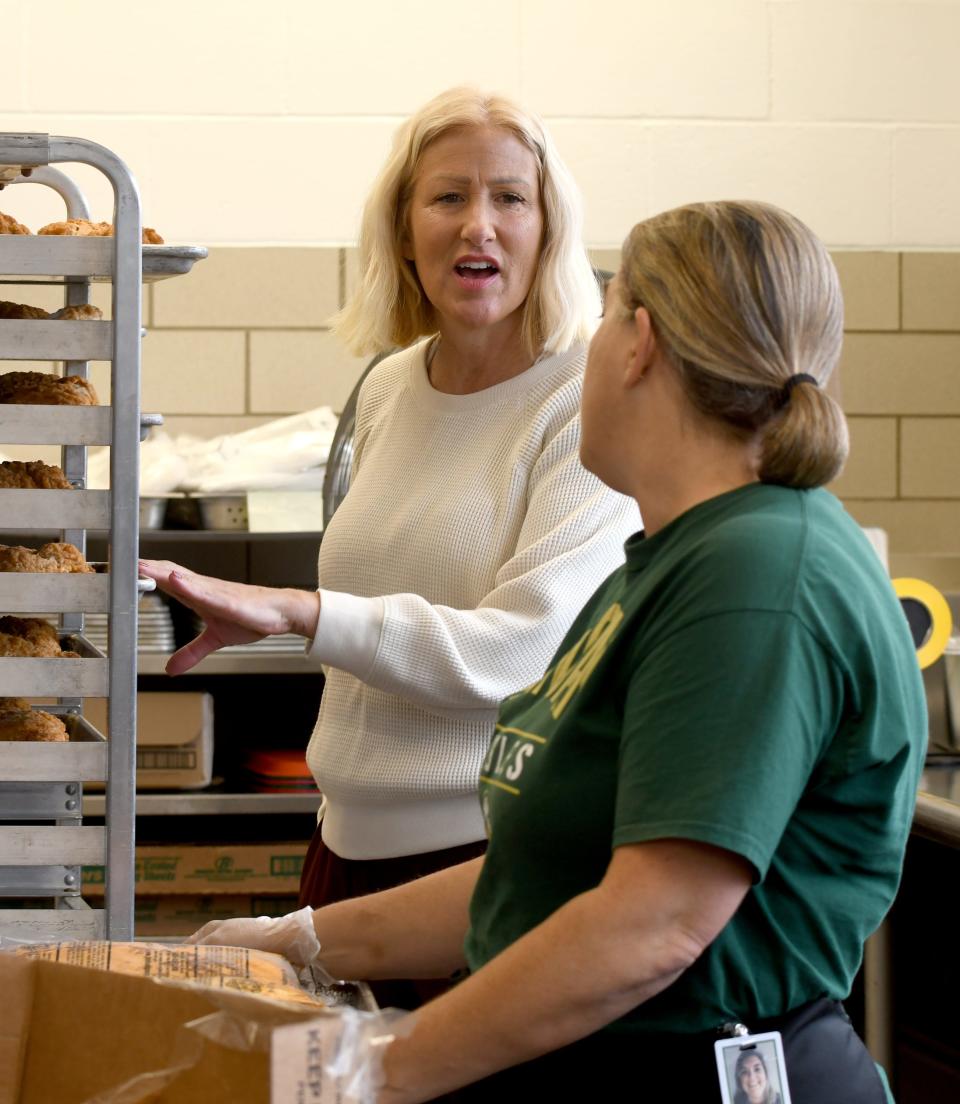
"But circumstances in local communities remain unpredictable, and supply chains for food and labor have been stressed and at times disrupted. These funds will support procurement of agricultural commodities and enable USDA’s Food and Nutrition Service (FNS) and Agricultural Marketing Service (AMS) to enhance the toolbox for school nutrition professionals working hard to make sure students have reliable access to healthy meals."
Bigger concerns
Food service personnel are spending more time each week ordering food and supplies.
Having to switch menus mid-stream has caused other concerns especially for students who have dietary restrictions.
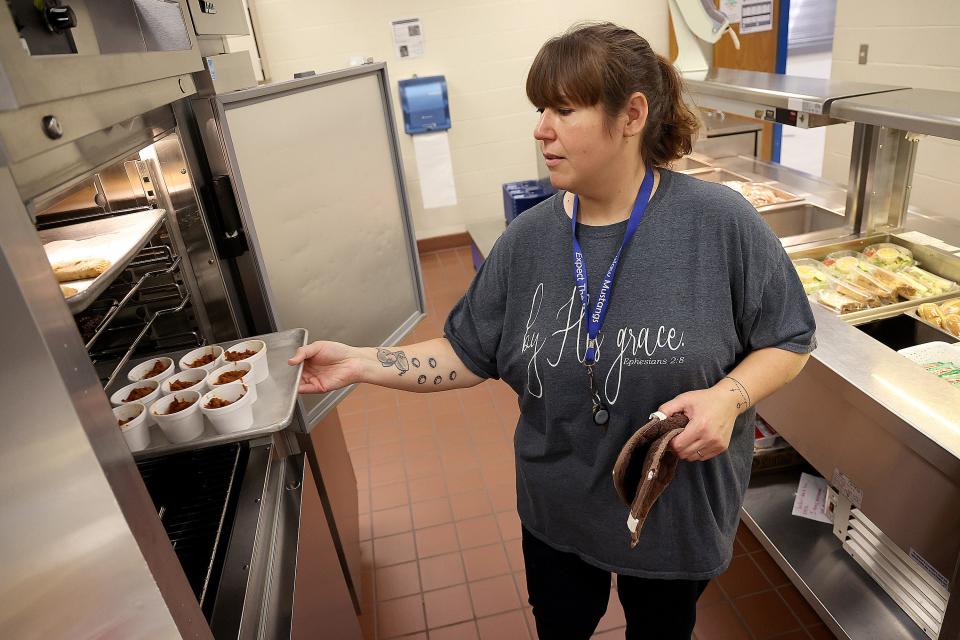
The slightest change in the menu can significantly impact the student.
For example, a student with diabetes is keeping a close eye on the sugar and carb content of meals. Even a change from one brand of chocolate muffins to another could mean the carb count is different.
Koons said staff members have spent hours on the phone with parents discussing the changes in menus for diabetic students.
But in a larger district like Plain, Rex can't stay in contact with every parent.
She's asked nurses who care for these students to check daily on the meals to account for any changes to the nutritional information.
"That's an issue that keeps me up at night," Rex said.
She also worries about the items being served to kids. She takes pride in the quality products she feeds the students.
A favorite doughnut that once was served is no longer available and Rex hasn't been able to find one that lives up to the original.
"At Plain, we have such high standards for our food and knowing that standards of food are less bothers me," she said. "And the kids will let you know."
Despite the uncertainty and changes, both say cafeteria staff has done a great job adapting and preparing good meals for the students.
"We're still feeding our children," Koons said, "We haven't skipped any meals. We are being flexible and doing the best we can."
Megan Henry is the Columbus Dispatch's K-12 education reporter. Reach her at mhenry@dispatch.com or (614) 559-1758. Follow her on Twitter @megankhenry.
Reach Amy Knapp at 330-775-1135 or amy.knapp@indeonline.com. On Twitter: @aknappINDE.
This article originally appeared on The Columbus Dispatch: Food supply issues create challenges for Stark County schools

